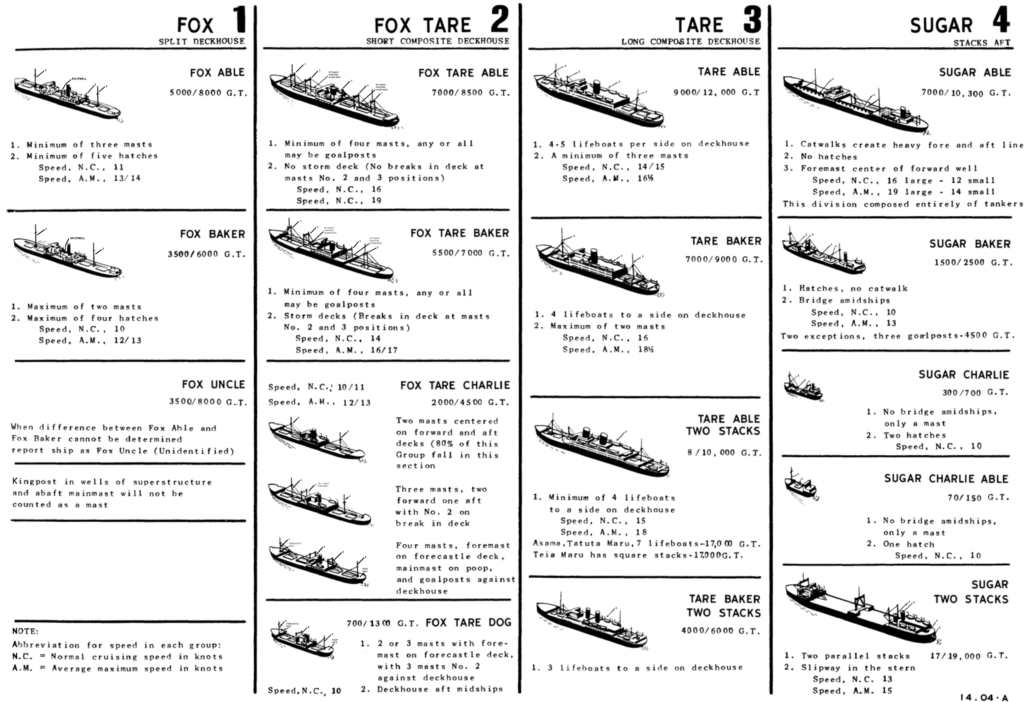In mission reports, it is common for Japanese maritime vessels to be referred to by strings of codewords, such as FOX BAKER or SUGAR CHARLIE. The US Navy and Army Air Force used the same mnemonic codenames, presumably to facilitate accurate communications. I never found the codes to be self-explanatory and was never sure of what kind of vessel had been targeted.
There are several wartime handbooks and manuals for identifying Japanese merchant vessels that shed some light on just what the codes meant. The booklets were part of a program to standardize how an observer could differentiate between and describe the many types of ships. My interpretation of the mnemonics is as follows:
- FOX refers to a FREIGHTER, all of which have a characteristic split deckhouse or superstructure
- FOX TARE refers to a FREIGHTER TRANSPORT, which have a short, composite deckhouse or superstructure
- TARE refers to a personnel TRANSPORT, with a long composite deckhouse
- SUGAR refers to vessels with STACKS AFT
Each type, or division, then has a number of variations based on other characteristics such as the arrangement and number of hatches, masts, and smoke stacks.
The following image was taken from the Photographic Interpretation Handbook, United States Forces: Section 14 Ships and Shipping, dated May 1945, found on the Digital Commons@University of Nebraska-Lincoln, U.S. Department of Defense, DOD Military Intelligence web page (https://digitalcommons.unl.edu/dodmilintel/17/). Hovering your cursor over the image below will provide a magnified view to help see the details.

Also available through online searches are several supplements to ONI 208-J, published by the Office of Naval Intelligence. Supplement 2, dated January 1945, is titled Far-Eastern Small Craft while Supplement 3, also dated January 1945, is titled Japanese Merchant Ship Types. Both versions contain generalized line drawings, dimensional data, as well as photographs of actual vessels and introduce a third codeword to the strings.

As an example, the 345th Bomb Group flew a mission to Mako, Pescadores Islands, on April 4, 1945. The results of the minimum altitude bombing/strafing attack were highlighted in the 345th Unit History for that month.

While the ship types are abbreviated in the image text, there are only a few codewords to work with, so the SAS should translate to a SUGAR ABLE SUGAR and an SCS as a SUGAR CHARLIE SUGAR. By consulting one of the ONI 208-J supplement books, generalized drawings of the ship types can be found. Barges, trawlers and tugs are also covered in the manuals.
Some of the mnemonic codenames incorporate other words in place of SUGAR for the third codeword. While I could not find any definition for them among the various documents, it seems that SUGAR, ITEM, and LOVE used as third codewords refer to the relative lengths of the ships. From what I can tell from the dimensional data, I am left with the idea that SUGAR refers to Short, ITEM refers to Intermediate, and LOVE refers to Long.
